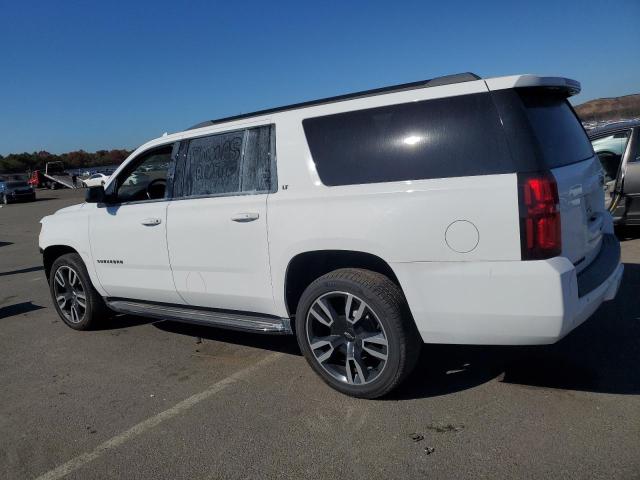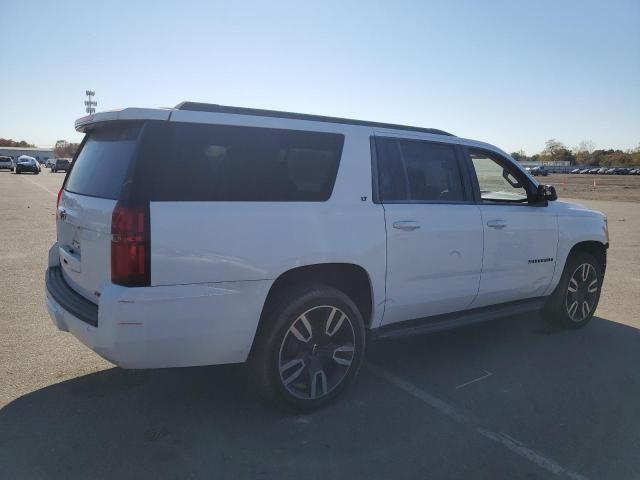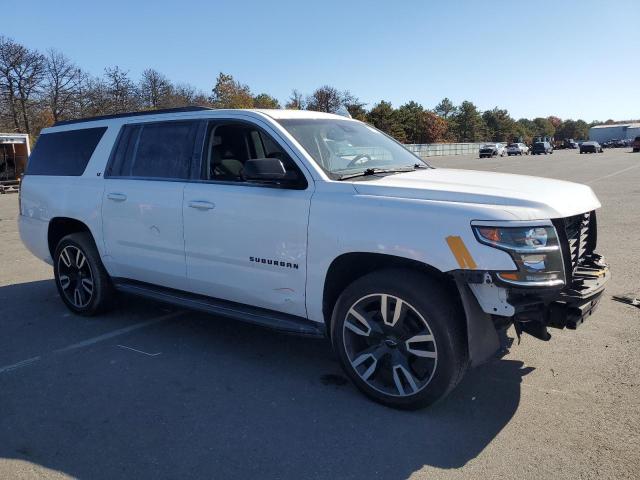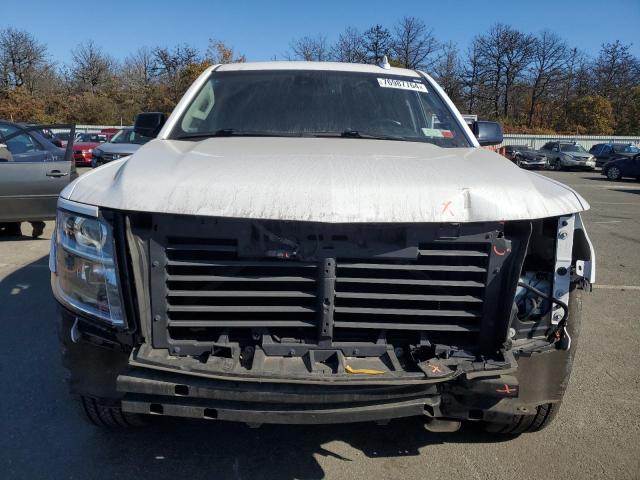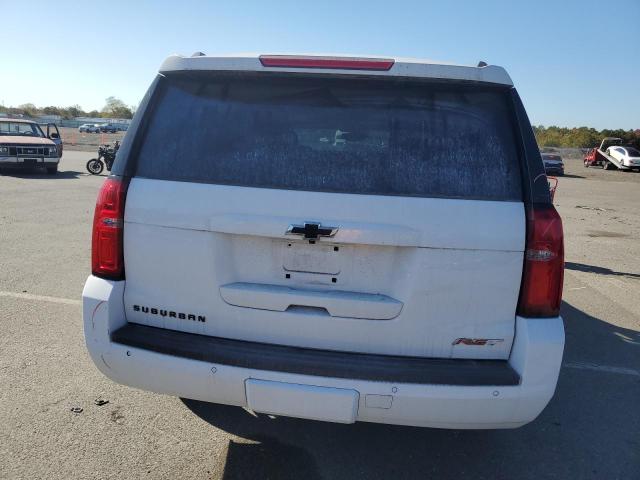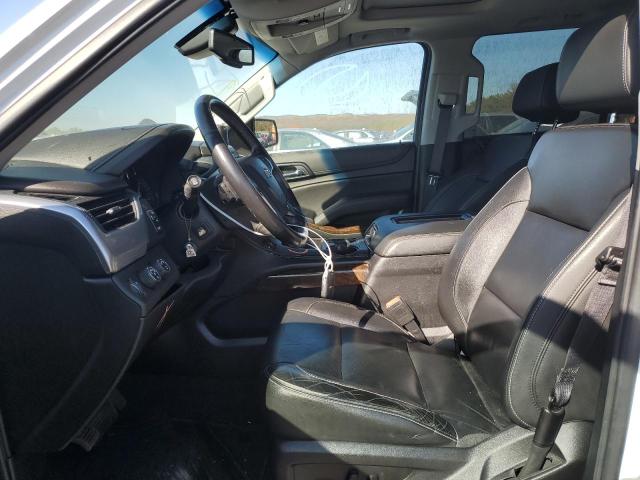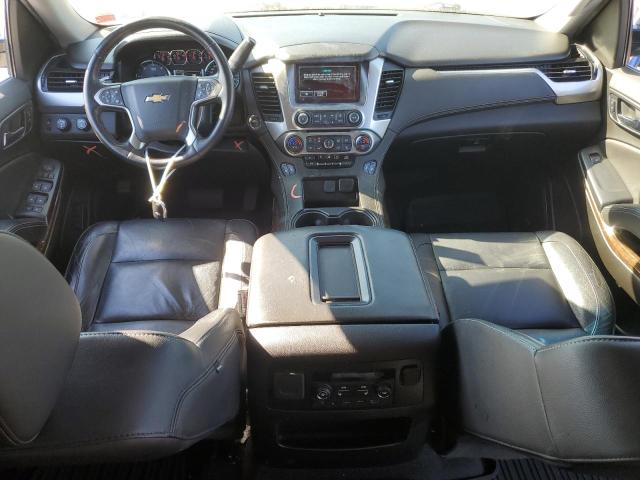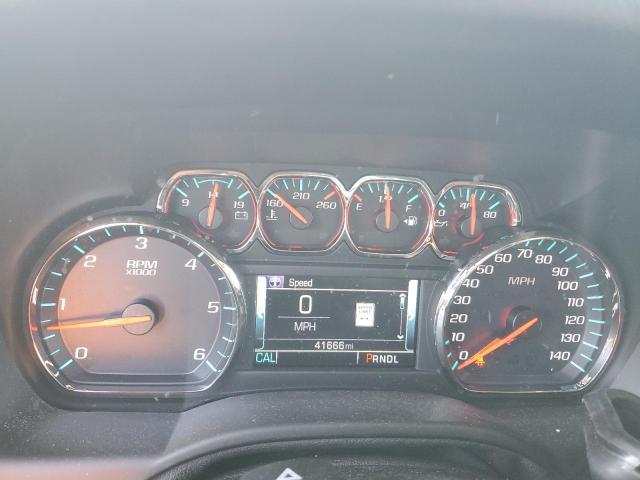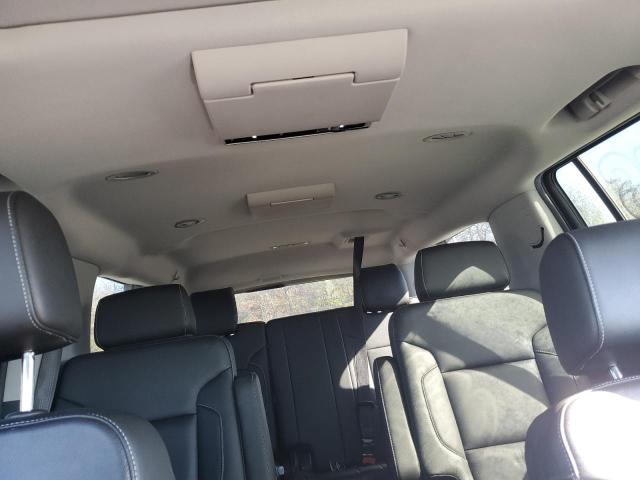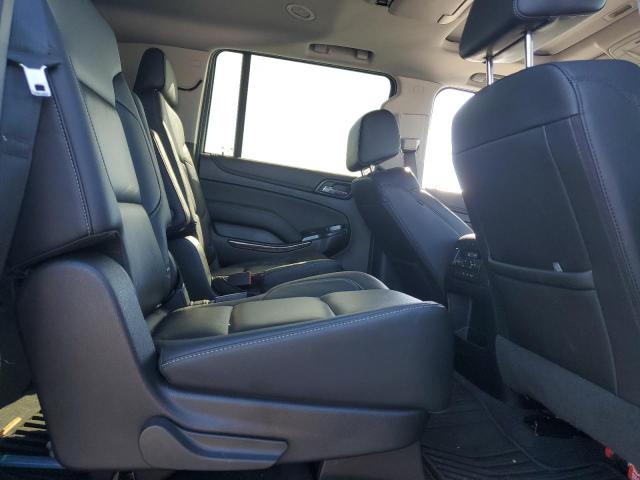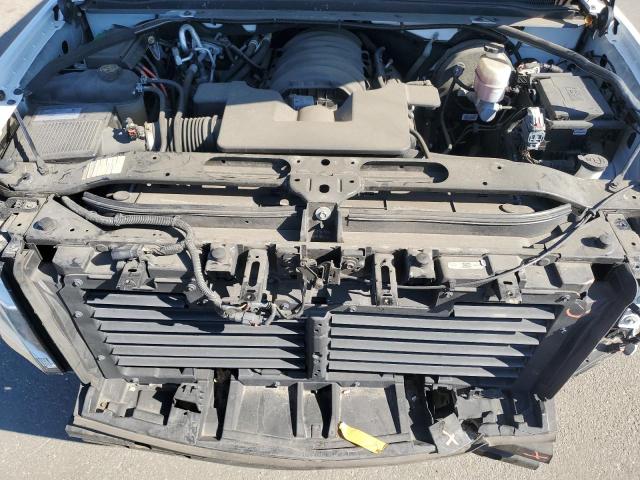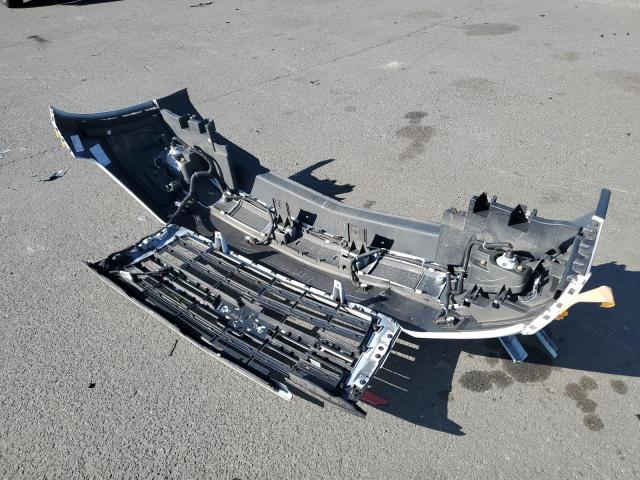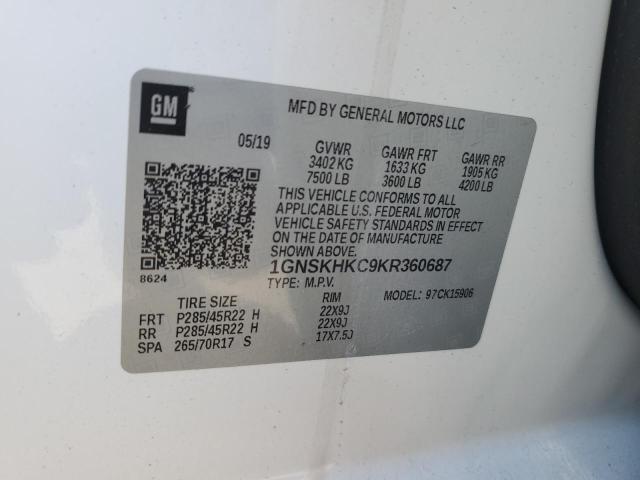2019 CHEVROLET SUBURBAN | 1GNSKHKC9KR360687
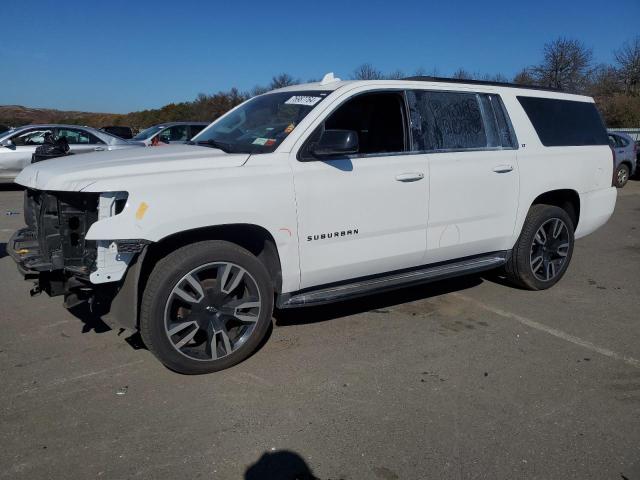 ❯
❯
Specifications
2
~$72,000
Engine: 6.2L naturally aspirated V8
Torque: 624 Nm
0–100 km/h: ~6.2 s
Though not traditionally a performance SUV, the 2015–2020 Chevrolet Suburban offered surprising power and refinement for a vehicle of its scale. The available 6.2-liter V8—shared with the Corvette C7 and Cadillac Escalade—delivered 420 horsepower and 624 Nm of torque, making the long-wheelbase Suburban capable of accelerating from 0 to 100 km/h in as little as 6.2 seconds in RST Performance Package guise. Even the standard 5.3-liter V8, producing 355 horsepower, provided strong low-end grunt, perfectly suited to towing and highway cruising.
While the Suburban's ladder-frame construction and sheer size prevented it from offering agile cornering, it was remarkably composed thanks to available Magnetic Ride Control on Premier trims. The 10-speed automatic transmission (in later models) provided smooth, responsive shifts and improved both efficiency and performance. The ride quality was especially polished over long distances, and with optional 4WD and a two-speed transfer case, the Suburban retained off-road and all-weather competence.
In essence, the Suburban's "sport" comes from its grand touring capability: confident V8 power, a stable and plush ride, and the ability to carry 7+ people and gear at high speed across long distances without strain.
Body Styles
The Chevrolet Suburban was offered as a four-door, three-row extended-length SUV, distinguished from the shorter-wheelbase Tahoe by a longer rear cargo area and an overall length of over 5.7 meters (224 inches). It featured upright styling, a commanding stance, and a squared-off tailgate to maximize interior volume. Key design elements included a wide grille, C-shaped headlamps, sharp shoulder lines, and roof rails for added practicality.
Despite its size, the Suburban retained a clean, purposeful design that appealed to both family buyers and fleet users. Premier and RST trims added chrome or blacked-out elements, larger wheels, and sportier front fascias. Though enormous, the Suburban’s well-proportioned design made it look elegant rather than excessive, particularly in darker colors and high trims.
Model Name Meaning (Manufacturer)
“Suburban” originates from its original design purpose—serving suburban families with large, enclosed, wagon-style transport. The name debuted in the 1930s and has since become synonymous with large, versatile SUVs. Over time, "Suburban" has come to represent not just a geographic reference but a philosophy of capability, endurance, and scale.
Model Name Meaning (Languages)
“Suburban” is derived from the Latin suburbium (meaning “under the city”), referring to areas just outside major urban centers. The name evokes ideas of space, family life, and mobility—fitting for a vehicle built to carry many passengers and cargo in comfort. It’s instantly understandable in English-speaking markets and conveys lifestyle appeal rooted in North American culture.
Body & Interior Colors and Rims
The Chevrolet Suburban (2015–2020) continued its legacy as a full-size, three-row SUV with imposing proportions and a classic American presence. Its range of exterior color options was designed to balance rugged capability with upscale appeal. Standard colors included Summit White, Black, Silver Ice Metallic, and Satin Steel Metallic, while premium finishes like Shadow Gray Metallic, Iridescent Pearl Tricoat, Cajun Red Tintcoat, and Pepperdust Metallic added a touch of sophistication. Fleet-oriented trims featured more utilitarian shades such as Brownstone Metallic and Blue Velvet Metallic, while luxury trims like Premier and LTZ could be optioned with richer tri-coat or metallic finishes.
The Suburban’s body-on-frame design featured clean horizontal lines, a prominent two-bar chrome grille, squared-off fender flares, and full-width tailgate treatment. Higher trims included body-colored bumpers, chrome window surrounds, and roof rails, while black-out appearance packages and RST editions added gloss black detailing, monochrome badging, and exclusive dark finishes for buyers seeking a sportier, more urban look.
Inside, the Suburban offered a range of interior colors and trim materials aligned with its multiple trim levels — from functional base models to tech-laden luxury variants. Common upholstery colors included Jet Black, Cocoa/Dune, Cocoa/Mahogany, and Dark Ash/Jet Black, depending on the trim and configuration. Base LS and LT models came with premium cloth or optional leather-appointed seats, while LTZ and Premier trims featured perforated leather upholstery, contrast stitching, heated and ventilated front seats, and heated second-row captain’s chairs.
Interior accents varied from brushed aluminum and matte silver plastics to woodgrain-look trim in darker finishes on Premier models. The cabin layout featured a straightforward dashboard, with analog gauges and a central Chevrolet MyLink touchscreen, while upper trims added wireless charging, rear-seat entertainment, head-up display, and Bose surround audio systems. Special editions like the Suburban Midnight, Premier Plus, or 60th Anniversary introduced exclusive interior colors, badging, or upscale materials such as Jet Black/Maple Sugar two-tone seating.
Wheels were a key styling and functional element across the Suburban lineup. Standard LS models came equipped with 18-inch aluminum wheels in Bright Machined or Painted Silver, while LT and Premier models offered 20-inch polished or chrome wheels, often with split-spoke or multi-spoke designs. 22-inch wheels were available on RST and Premier Plus editions, finished in Gloss Black, Ultra Bright Machined, or Chrome with black inserts, depending on the appearance package.
Tires were typically all-season and paired with Magnetic Ride Control on higher trims for improved ride quality. Wheel arches remained squared and muscular, visually grounding the Suburban’s large frame. Behind the wheels, the braking system included ventilated disc brakes with Duralife rotors, optimized for durability on large, heavy-duty vehicles. Optional red brake calipers and performance tires were offered with appearance packages like the RST Performance Edition.
The overall visual impact of the Suburban — especially in its upper trims — combined subdued elegance with road-dominating presence, where wheels and color choices served to either reinforce its utilitarian roots or elevate it into full-blown luxury SUV territory.
Top Expensive Options
- RST Performance Package (6.2L V8, Magnetic Ride, 10-speed auto): $5,400
- Sun, Entertainment, and Destinations Package: $3,100
- Rear-Seat Blu-ray/DVD System: $1,720
- Power-Deployable Running Boards: $1,745
- Adaptive Cruise Control with Forward Collision Alert: $1,500
- Panoramic Sunroof (on select trims): $1,000
- Max Trailering Package with 3.42 Axle Ratio: $850
- Enhanced Security Package (Interior Sensor, Glass Break Sensors): $620
- 22" Gloss Black Aluminum Wheels with Performance Tires: $2,995
- Premium Bose Centerpoint Surround Audio System: $1,200
vs Competitors
The Suburban faced off against the Ford Expedition MAX, Toyota Sequoia, and Nissan Armada. The Expedition MAX offered independent rear suspension and a more spacious third row, while the Suburban provided better towing capacity, V8 options, and long-proven reliability. The Sequoia was durable but outdated in tech and refinement, while the Armada had a smoother V8 but lacked cargo space and customization. Against its GMC Yukon XL and Cadillac Escalade ESV cousins, the Suburban provided similar utility with a more utilitarian, value-focused approach. For families, government agencies, and commercial fleets, the Suburban remained a dominant choice for its mix of space, power, and brand familiarity.
Fun Fact
The Chevrolet Suburban holds the record as the longest continuously used automobile nameplate in history, having been in production since 1935. By the 2015–2020 generation, it had become one of the most widely deployed vehicles for federal, municipal, and diplomatic services across North America—thanks to its interior volume, rugged durability, and available 4WD. Its platform also formed the basis for numerous armored variants and motorcade vehicles used by the U.S. Secret Service.
Lot Details
-
Sale Date23/May/2025
-
Lot Number76987764
-
Sale document
-
Location
-
Odometer41,666 miles (67,055 km)
-
Primary Damage:FRONT END
-
Fuel
-
Engine Type5.3L 8
-
Transmission
-
Drive Type
-
Color
Final Bid Chevrolet Suburban (2019)
$10,000
$20,618
$45,250
Specifications
2
~$72,000
Torque:
0–100 km/h:
Though not traditionally a performance SUV, the 2015–2020 Chevrolet Suburban offered surprising power and refinement for a vehicle of its scale. The available 6.2-liter V8—shared with the Corvette C7 and Cadillac Escalade—delivered 420 horsepower and 624 Nm of torque, making the long-wheelbase Suburban capable of accelerating from 0 to 100 km/h in as little as 6.2 seconds in RST Performance Package guise. Even the standard 5.3-liter V8, producing 355 horsepower, provided strong low-end grunt, perfectly suited to towing and highway cruising.
While the Suburban's ladder-frame construction and sheer size prevented it from offering agile cornering, it was remarkably composed thanks to available Magnetic Ride Control on Premier trims. The 10-speed automatic transmission (in later models) provided smooth, responsive shifts and improved both efficiency and performance. The ride quality was especially polished over long distances, and with optional 4WD and a two-speed transfer case, the Suburban retained off-road and all-weather competence.
In essence, the Suburban's "sport" comes from its grand touring capability: confident V8 power, a stable and plush ride, and the ability to carry 7+ people and gear at high speed across long distances without strain.
Body Styles
The Chevrolet Suburban was offered as a four-door, three-row extended-length SUV, distinguished from the shorter-wheelbase Tahoe by a longer rear cargo area and an overall length of over 5.7 meters (224 inches). It featured upright styling, a commanding stance, and a squared-off tailgate to maximize interior volume. Key design elements included a wide grille, C-shaped headlamps, sharp shoulder lines, and roof rails for added practicality.
Despite its size, the Suburban retained a clean, purposeful design that appealed to both family buyers and fleet users. Premier and RST trims added chrome or blacked-out elements, larger wheels, and sportier front fascias. Though enormous, the Suburban’s well-proportioned design made it look elegant rather than excessive, particularly in darker colors and high trims.
Model Name Meaning (Manufacturer)
“Suburban” originates from its original design purpose—serving suburban families with large, enclosed, wagon-style transport. The name debuted in the 1930s and has since become synonymous with large, versatile SUVs. Over time, "Suburban" has come to represent not just a geographic reference but a philosophy of capability, endurance, and scale.
Model Name Meaning (Languages)
“Suburban” is derived from the Latin suburbium (meaning “under the city”), referring to areas just outside major urban centers. The name evokes ideas of space, family life, and mobility—fitting for a vehicle built to carry many passengers and cargo in comfort. It’s instantly understandable in English-speaking markets and conveys lifestyle appeal rooted in North American culture.
Body & Interior Colors and Rims
The Chevrolet Suburban (2015–2020) continued its legacy as a full-size, three-row SUV with imposing proportions and a classic American presence. Its range of exterior color options was designed to balance rugged capability with upscale appeal. Standard colors included Summit White, Black, Silver Ice Metallic, and Satin Steel Metallic, while premium finishes like Shadow Gray Metallic, Iridescent Pearl Tricoat, Cajun Red Tintcoat, and Pepperdust Metallic added a touch of sophistication. Fleet-oriented trims featured more utilitarian shades such as Brownstone Metallic and Blue Velvet Metallic, while luxury trims like Premier and LTZ could be optioned with richer tri-coat or metallic finishes.
The Suburban’s body-on-frame design featured clean horizontal lines, a prominent two-bar chrome grille, squared-off fender flares, and full-width tailgate treatment. Higher trims included body-colored bumpers, chrome window surrounds, and roof rails, while black-out appearance packages and RST editions added gloss black detailing, monochrome badging, and exclusive dark finishes for buyers seeking a sportier, more urban look.
Inside, the Suburban offered a range of interior colors and trim materials aligned with its multiple trim levels — from functional base models to tech-laden luxury variants. Common upholstery colors included Jet Black, Cocoa/Dune, Cocoa/Mahogany, and Dark Ash/Jet Black, depending on the trim and configuration. Base LS and LT models came with premium cloth or optional leather-appointed seats, while LTZ and Premier trims featured perforated leather upholstery, contrast stitching, heated and ventilated front seats, and heated second-row captain’s chairs.
Interior accents varied from brushed aluminum and matte silver plastics to woodgrain-look trim in darker finishes on Premier models. The cabin layout featured a straightforward dashboard, with analog gauges and a central Chevrolet MyLink touchscreen, while upper trims added wireless charging, rear-seat entertainment, head-up display, and Bose surround audio systems. Special editions like the Suburban Midnight, Premier Plus, or 60th Anniversary introduced exclusive interior colors, badging, or upscale materials such as Jet Black/Maple Sugar two-tone seating.
Wheels were a key styling and functional element across the Suburban lineup. Standard LS models came equipped with 18-inch aluminum wheels in Bright Machined or Painted Silver, while LT and Premier models offered 20-inch polished or chrome wheels, often with split-spoke or multi-spoke designs. 22-inch wheels were available on RST and Premier Plus editions, finished in Gloss Black, Ultra Bright Machined, or Chrome with black inserts, depending on the appearance package.
Tires were typically all-season and paired with Magnetic Ride Control on higher trims for improved ride quality. Wheel arches remained squared and muscular, visually grounding the Suburban’s large frame. Behind the wheels, the braking system included ventilated disc brakes with Duralife rotors, optimized for durability on large, heavy-duty vehicles. Optional red brake calipers and performance tires were offered with appearance packages like the RST Performance Edition.
The overall visual impact of the Suburban — especially in its upper trims — combined subdued elegance with road-dominating presence, where wheels and color choices served to either reinforce its utilitarian roots or elevate it into full-blown luxury SUV territory.
Top Expensive Options
- RST Performance Package (6.2L V8, Magnetic Ride, 10-speed auto): $5,400
- Sun, Entertainment, and Destinations Package: $3,100
- Rear-Seat Blu-ray/DVD System: $1,720
- Power-Deployable Running Boards: $1,745
- Adaptive Cruise Control with Forward Collision Alert: $1,500
- Panoramic Sunroof (on select trims): $1,000
- Max Trailering Package with 3.42 Axle Ratio: $850
- Enhanced Security Package (Interior Sensor, Glass Break Sensors): $620
- 22" Gloss Black Aluminum Wheels with Performance Tires: $2,995
- Premium Bose Centerpoint Surround Audio System: $1,200
vs Competitors
The Suburban faced off against the Ford Expedition MAX, Toyota Sequoia, and Nissan Armada. The Expedition MAX offered independent rear suspension and a more spacious third row, while the Suburban provided better towing capacity, V8 options, and long-proven reliability. The Sequoia was durable but outdated in tech and refinement, while the Armada had a smoother V8 but lacked cargo space and customization. Against its GMC Yukon XL and Cadillac Escalade ESV cousins, the Suburban provided similar utility with a more utilitarian, value-focused approach. For families, government agencies, and commercial fleets, the Suburban remained a dominant choice for its mix of space, power, and brand familiarity.
Fun Fact
The Chevrolet Suburban holds the record as the longest continuously used automobile nameplate in history, having been in production since 1935. By the 2015–2020 generation, it had become one of the most widely deployed vehicles for federal, municipal, and diplomatic services across North America—thanks to its interior volume, rugged durability, and available 4WD. Its platform also formed the basis for numerous armored variants and motorcade vehicles used by the U.S. Secret Service.

